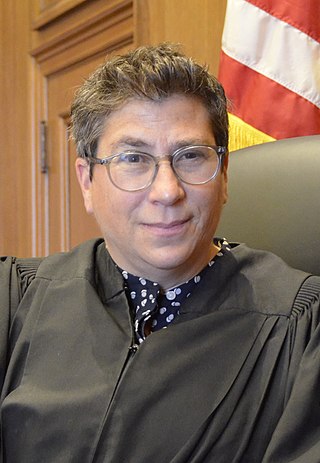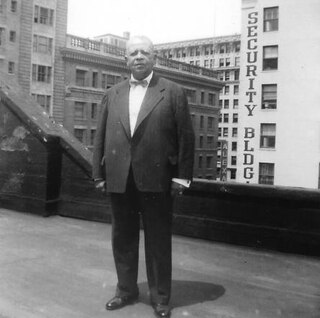Related Research Articles

Belva Ann Bennett Lockwood was an American lawyer, politician, educator, and author who was active in the women's rights and women's suffrage movements. She was one of the first women lawyers in the United States, and in 1879 she became the first woman to be admitted to practice law before the U.S. Supreme Court. Lockwood ran for president in 1884 and 1888 on the ticket of the National Equal Rights Party and was the first woman to appear on official ballots. While Victoria Woodhull is commonly cited as the first woman to run for president, she was not old enough to be elected, unlike Lockwood.

Patricia Roberts Harris was an American politician, diplomat, and legal scholar. She served as the 6th United States secretary of housing and urban development from 1977 to 1979 and as the 13th United States secretary of health and human services from 1979 to 1981 under President Jimmy Carter. She previously served as the United States ambassador to Luxembourg from 1965 to 1967 under President Lyndon B. Johnson. Throughout her public career, Harris was a trailblazer for women and people of color to hold a number of positions, including the first African American woman and woman of color ever to serve in a presidential cabinet and the first woman and person of color appointed to two different presidential cabinet positions. She was the first African American HHS secretary and just the second black HUD secretary, as well as the second woman to lead either of those executive departments. Furthermore, she was the first black woman U.S. ambassador, the dean of a U.S. law school, and a member of a Fortune 500 company's board of directors. A member of the Democratic Party, she ran for mayor of the District of Columbia in the 1982 mayoral election but was defeated during the primaries, ultimately finishing second to incumbent mayor Marion Barry.
Arnold & Porter Kaye Scholer LLP, doing business as Arnold & Porter, is an American multinational law firm. It is a white-shoe firm and among the largest law firms in the world, both by revenue and by number of lawyers.

Ellen Spencer Mussey was a lawyer, educator, and pioneer in the field of women's rights to legal education. Mussey self-tutored in the law, helped establish educational opportunities for women in that field, and campaigned to improve women's legal rights. She was the daughter of Platt Rogers Spencer, a reformer and promoter of the Spencerian Method, the widely used form of handwriting.

Myra Colby Bradwell was an American publisher and political activist. She attempted in 1869 to become the first woman to be admitted to the Illinois bar to practice law, but was denied admission by the Illinois Supreme Court in 1870 and the United States Supreme Court in 1873, in rulings upholding a separate women's sphere. Bradwell had founded and published Chicago Legal News from 1868, reporting on the law and continued that work. Meanwhile, influenced by her case, in 1872 the Illinois legislature passed a state law prohibiting gender discrimination in admission to any occupation or profession.

Frank R. Reid was an American lawyer and politician who served six terms as a U.S. Representative from Illinois from 1923 to 1935.

Howard University School of Law is the law school of Howard University, a private, federally chartered historically black research university in Washington, D.C. It is one of the oldest law schools in the country and the oldest historically black law school in the United States.

Vicki Lynn Miles-LaGrange is an inactive Senior United States district judge of the United States District Court for the Western District of Oklahoma. She was the first African-American woman to be sworn in as United States Attorney for the Western District of Oklahoma. She was also the first African-American woman elected to the Oklahoma Senate.

Alison Julie Nathan is an American lawyer who has served as a United States circuit judge of the United States Court of Appeals for the Second Circuit since 2022. She served as a United States district judge of the United States District Court for the Southern District of New York from 2011 to 2022. She previously served as associate White House counsel for President Barack Obama.

Ada Matilda Cole Bittenbender was an American lawyer and feminist activist. She became the first woman admitted to practice before the Nebraska Supreme Court and the third woman admitted to practice before the U.S. Supreme Court.

Mary Simmerson Cunningham Logan was an American writer and editor from Missouri.

Jennifer Gillian Newstead is an American attorney who served as the Legal Adviser of the Department of State.
Renee C. Hanover was an American lawyer and civil rights advocate who practiced in Chicago. As a lawyer, she defended groups and individuals involved in civil rights cases dealing with gender, LGBT issues and race. She was part of the Women's Law Center and fought for intersectional equality. Hanover was one of the first openly gay lawyers to practice in the United States.

Chiyoko Sakamoto (1912–1994) was California's first Japanese American female lawyer.
Rei Kihara Osaki was the first Japanese American female lawyer in Idaho.

Jeannette Carter (1886–1964) was an American lawyer, labor organizer, and suffragist. She was the first African-American woman in Washington, D.C., to be a notary.

Hugh Ellwood Macbeth Sr. (1884-1956) was an African American attorney who defended Japanese American wartime legal rights in California during the Second World War.
References
- ↑ Parker, Monica R. (2010). What it Takes: How Women of Color Can Thrive Within the Practice of Law . American Bar Association. p. 5. ISBN 9781590319925.
- ↑ KANE, JOSEPH NATHAN (1975). FAMOUS FIRST FACTS AND RECORDS . ISBN 9780824200152.
- ↑ Kane, Joseph Nathan (1964). Famous first facts: a record of first happenings, discoveries and inventions in the United States . H. W. Wilson.
- ↑ The Pullman News. Pullman Company. 1928.
- ↑ Robinson, Greg (2016-09-01). The Great Unknown: Japanese American Sketches. University Press of Colorado. ISBN 9781607324294.
- ↑ "Transcript: 'I'm not a Jap, I'm a half-Jap'". Washington Post. Retrieved 2019-08-26.
- ↑ Congressional Record: Proceedings and Debates of the ... Congress. U.S. Government Printing Office. 1980.
- ↑ Robinson, Greg (2016-09-01). The Great Unknown: Japanese American Sketches. University Press of Colorado. ISBN 9781607324294.
- ↑ Women lawyers' journal. 1944.